Can Duct Tape Really Remove a Wart?
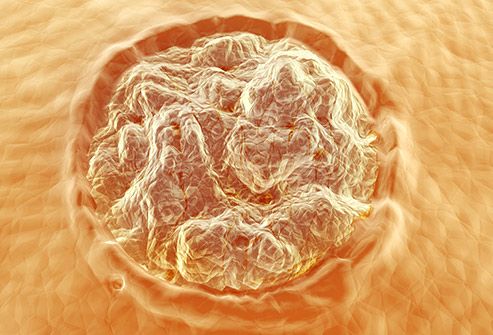
These small, noncancerous growths appear when your skin is infected with one of the many viruses of the human papillomavirus (HPV) family. The virus triggers extra cell growth, which makes the outer layer of skin thick and hard in that spot. While they can grow anywhere you have skin, you're more likely to get one on your hands or feet. The type of wart depends on where it is and what it looks like.
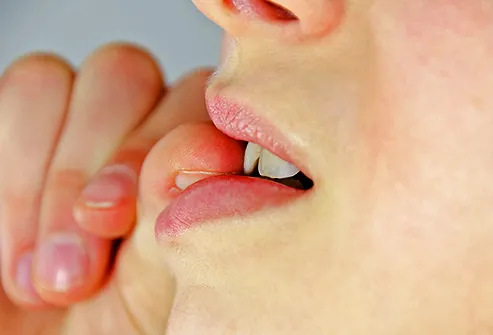
Because each person's immune system responds differently to the virus, not everyone who comes in contact with HPV will get a wart. And if you cut or damage your skin in some way, it's easier for the virus to take hold. That's why people with chronic skin conditions, such as eczema, or who bite their nails or pick at hangnails are prone to getting warts.

Kids and teens get more warts than adults because their immune systems haven't built up defenses against the many types of HPV. People with weakened immune systems -- like those with HIV or who are taking biologic drugs for conditions like RA, psoriasis, and IBD -- are also more susceptible to getting warts because their body may not be able to fight them off.
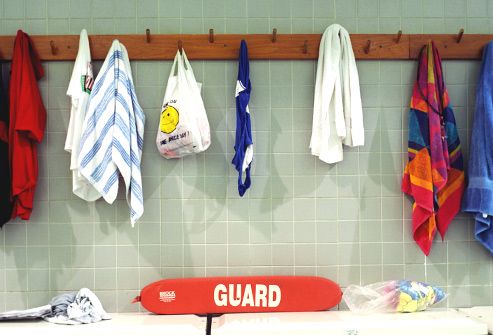
Warts are highly contagious and are mainly passed by direct skin contact, such as when you pick at your warts and then touch another area of your body. You can also spread them with things like towels or razors that have touched a wart on your body or on someone else's. Warts like moist and soft or injured skin.
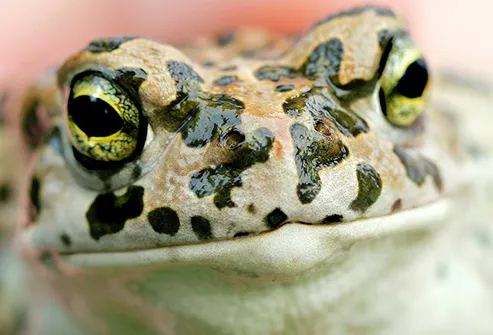
You can touch or kiss all the frogs and toads you like because they won't give you warts.
Having a wart on your nose -- or anywhere else, for that matter -- doesn't make you a witch, either.
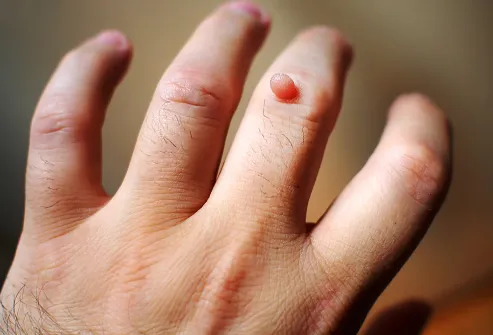
These flesh-colored growths are most often on the backs of hands, the fingers, the skin around nails, and the feet. They're small -- from the size of a pinhead to a pea -- and feel like rough, hard bumps. They may have black dots that look like seeds, which are really tiny blood clots. Typically they show up where the skin was broken, perhaps from biting your fingernails. (This can also transfer the virus from your hands to your face.)
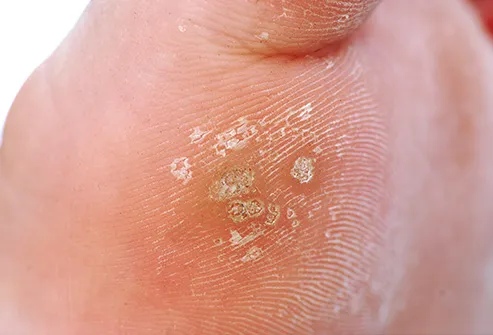
Does it feel like you have pebbles in your shoe? Check the soles of your feet. These warts got their name because "plantar" means "of the sole" in Latin. Unlike other warts, the pressure from walking and standing makes them grow into your skin. You may have just one or a cluster (called mosaic warts). Because they're flat, tough, and thick, it's easy to confuse them with calluses. Look for black dots on the surface.
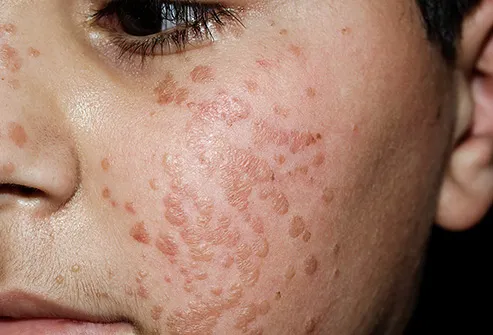
The upside of these warts is that they're smaller (maybe 1/8 inch wide, the thickness of the cord that charges your phone) and smoother than other types. The downside? They tend to grow in large numbers -- often 20 to 100 at a time. Flat warts tend to appear on children's faces, men's beard areas, and women's legs.
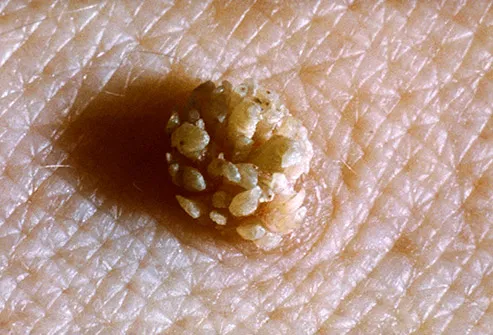
These fast-growing warts look thread-like and spiky, sometimes like tiny brushes. Because they tend to grow on the face -- around your mouth, eyes, and nose -- they can be annoying, even though they don't usually hurt.
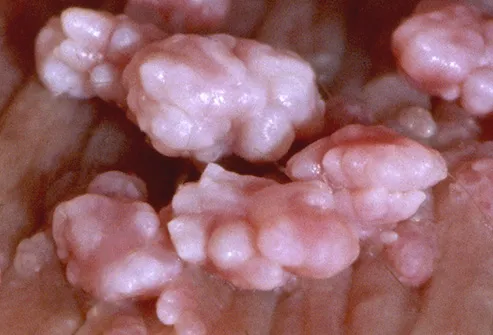
As you might expect, you get these by having sex with someone who has them. They may look like small, scattered, skin-colored bumps or like a cluster of bumps similar to a little bit of cauliflower on your genitals. And they can spread, even if you can't see them. Don't try to get rid of genital warts yourself; they can be hard to treat.
Other types of HPV that could cause cancer may be passed sexually, too, including through oral and anal sex.

Over time, your body will often build up a resistance and fight warts off. But it may take months or as many as 2 years for them to disappear. In adults, warts often stick around even longer, perhaps several years or more. Some warts won't ever go away. Doctors aren't sure why some do and others don't.
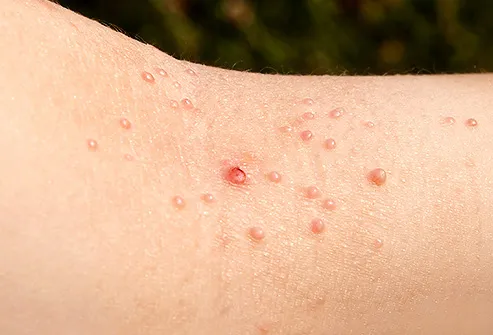
Most warts are harmless, and you don't need to do anything -- unless, of course, they're painful or embarrassing. Waiting for warts to go away could backfire, though: A wart might get bigger, new warts may appear, or you could give them to someone else. The best treatment depends on your age and health and the type of wart. But there's no cure for HPV, so some of the virus might stay in your skin after the wart is gone and reappear later.
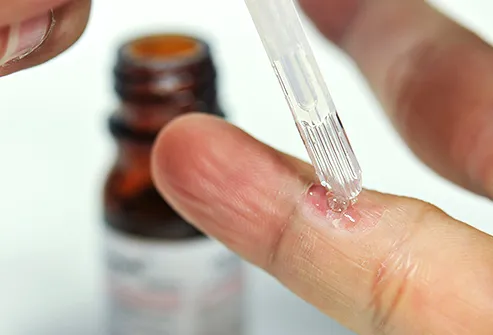
Over-the-counter gels, liquids, and pads with salicylic acid work by peeling away the dead skin cells of the wart to gradually dissolve it. For better results, soak the wart in warm water, then gently sand it with a disposable emery board before you apply the product. Be sure to use a new emery board each time. Be patient -- it can take several months.
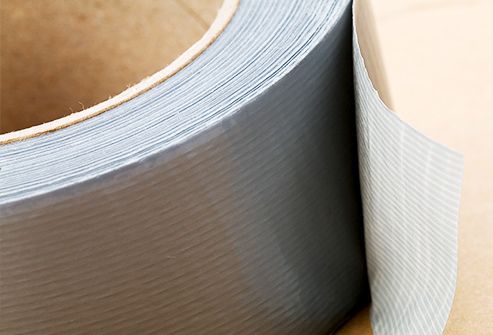
Yes, you may be able to get a remedy for warts at the hardware store! Study results are mixed, but covering warts with duct tape may peel away layers of skin and irritate it to kick-start your immune system. Soak, sand, and put duct tape on the area (use silver stuff because it's stickier). Remove and re-do the process every 5-6 days until the wart is gone. If it works for you, the wart should be gone within 4 weeks.
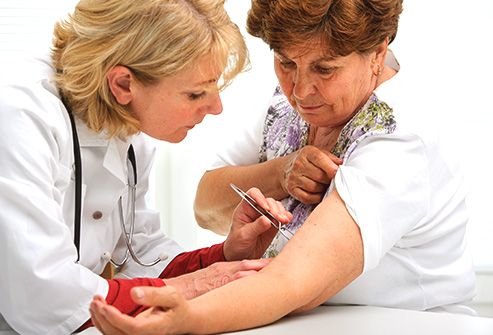
If you're not sure your skin growth is a wart (some skin cancers look like them), it doesn't get better with home treatment, it hurts, or you have a lot of them, check with your doctor. If you have diabetes or a weakened immune system, you should have a doctor take a look before you treat a wart yourself.
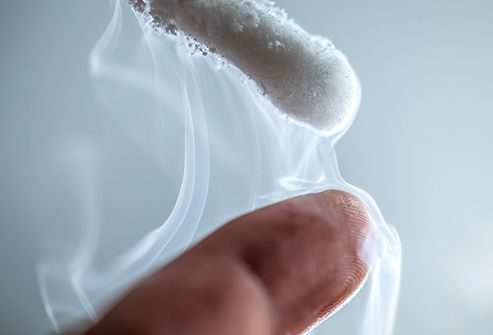
For adults and older children with common warts, your doctor will likely want to freeze them off with liquid nitrogen. (Because the nitrogen is so cold, it can cause a stabbing pain for a little while, which is why it's not used for small children.) You'll probably need more than one session. It works better when you follow up with a salicylic acid treatment after the area heals. Cryosurgery can cause light spots on people who have dark skin.
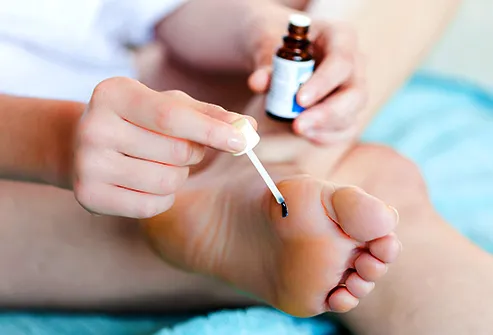
"Painting" a wart with this liquid makes a blister form underneath it, lifting it off the skin. When the blister dries (after about a week), the wart comes off with the blistered skin. Cantharidin is often the way to treat young children because it doesn't hurt at first, though it may tingle, itch, burn, or swell a few hours later.
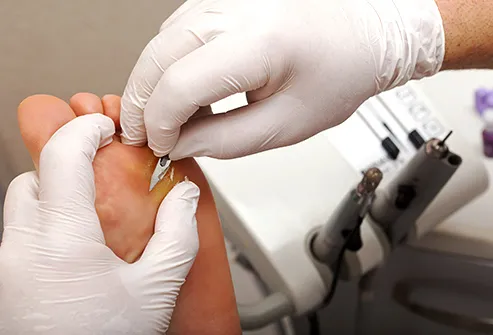
Doctors may use one or both of these methods after they numb the area.
Electrosurgery burns the wart with an electric charge through the tip of a needle. It's good for common warts, filiform warts, and foot warts. Your doctor could also use a laser.

For stubborn warts, peeling creams with glycolic acid, stronger salicylic acid, or tretinoin could do the trick. Diphencyprone (DCP) and imiquimod (Aldara) irritate your skin to encourage your immune system to go to work there. 5-Fluorouracil is a cancer medicine that may stop your body from making extra skin cells the same way it stops tumors from growing.

Your doctor may use a needle to put medicine into the wart to help get rid of it. Bleomycin, a cancer drug, may stop infected cells from making more. Interferon boosts your immune system to better fight the HPV, typically for genital warts.
These usually aren't the first things your doctor will try, and you may need to use salicylic acid or duct tape on your wart, too.
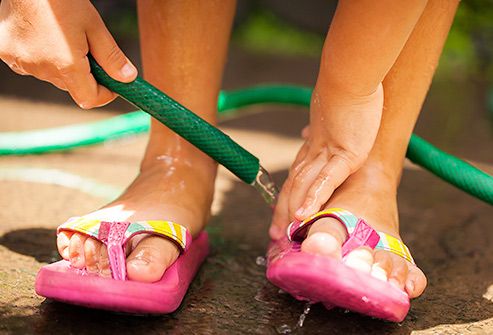
There's no way yet to prevent warts, but you can lower your chances of getting or spreading them:
o Don't touch, pick, or scratch your warts, or touch someone else's.
o Wash your hands after treating warts.
o Keep foot warts dry.
o Wear waterproof sandals or flip-flops in public showers, locker rooms, and around public pools.